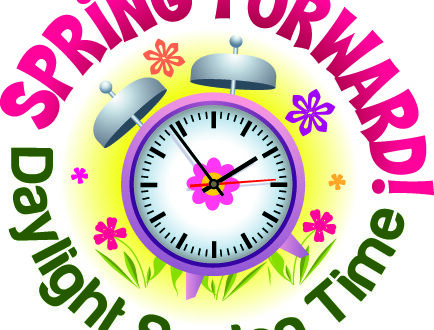Set your clocks ahead one hour Saturday night.
Tidbit – The main purpose of Daylight Saving Time (called “Summer Time” in many places in the world) is to make better use of daylight. We change our clocks during the summer months to move an hour of daylight from the morning to the evening.
Tidbit – Most areas of the United States observe daylight saving time (DST), the exceptions being Arizona (except for the Navajo, who do observe daylight saving time on tribal lands), Hawaii, and the overseas territories of American Samoa, Guam, the Northern Mariana Islands, Puerto Rico, and the United States Virgin Islands.
Tidbit – The world’s first official use of daylight saving time occurred in 1916. Clocks in the German Empire, and its ally Austria, were turned ahead by one hour on April 30, 1916— two years into World War I. The rationale was to minimize the use of artificial lighting to save fuel for the war effort.
Tidbit –According to www.history.com and contrary to popular belief, American farmers did not lobby for daylight saving to have more time to work in the fields. In fact, the agriculture industry was deeply opposed to the time switch when it was first implemented as a wartime measure. The sun, not the clock, dictated farmers’ schedules, so daylight saving was very disruptive. Farmers had to wait an extra hour for dew to evaporate to harvest hay, hired hands worked less since they still left at the same time for dinner, and cows weren’t ready to be milked an hour earlier to meet shipping schedules. Rather than rural interests, it has been urban entities such as retail outlets and recreational businesses that have championed daylight saving over the decades.
 North Myrtle Beach Times Serving our Community and the Grand Strand for over 50 years
North Myrtle Beach Times Serving our Community and the Grand Strand for over 50 years

